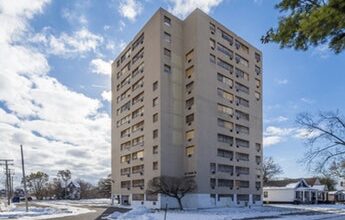The Ultimate Guide For Investing In Industrial Real Estate

Investing in the industrial estate can be the best decision if you want your money to be productive. We all know that industrial real estate is crucial in supporting the global economy.
These properties serve as essential venues for the production, storage, and distribution of goods and products that we all need. So, well-located and high-quality industrial real estate is the key to keep the global economy running smoothly.
We have all seen the current ups and downs in the economy because of the COVID 19 Pandemic. So, if you have the money that you wish to invest in, then industrial real estate is the best option for you.
Commercial real estate Austin brings to you this ultimate guide for investing in industrial real estate.
What is industrial real estate?
Industrial properties that are used to develop manufacture and produce goods and services are all included in industrial real estate. Logistics real estate supports the movements of these products and goods.
Industrial properties are not as glamorous as other types of real estate like a glimmering skyscraper, properly manicured multifamily property, or a crowd-drawing shopping mall. Commercial real estate is vital because these properties are the workhorses of the economy.
What are the types of industrial real estate?
Industrial real estate has a broad group of property types. They are as follows –
- Flex commercial office space for rent that is used to research and design new products.
- Light manufacturing facilities manufacture a variety of products for retail consumers or businesses.
- Food manufacturing facilities that produce packaged beverages and foods for grocery stores and restaurants.
- Other growing facilities that produce cannabis for medical use for the healthcare sector.
- Cold storage or temperature-controlled facilities that are used to store and distribute beverages and food products to restaurants and grocery stores.
- Sortation centers, warehouses, fulfillment centers, delivery stations vital for the distribution of goods to retail stores and businesses and also supporting the operation of e-commerce companies.
Just like other real estate properties, there are three classes of industrial properties –
Class A – These properties are in the best condition and are the youngest. These properties boast about having the best amenities and are located in prime locations that attract high-quality tenants. Examples of A-Class commercial real estate include modern logistic facilities near any interstate that support an e-commerce giant or a food manufacturing facility.
Class B – These properties are a bit older and run down that does not have the best amenities. These are in secondary and tertiary real estate markets and are leased to lower-quality tenants.
Class C – Class C properties have the lowest rating on these factors. So, they are either renovated to bring them up to the A or B Class quality category or are redeveloped to another property type like self-storage or residential.
Industrial real estate lease terms vary by the property type and its quality. Purpose-built state-of-the-art industrial manufacturing properties fetch triple net leases with the initial terms extending to 25 years. Meanwhile, lease terms for logistics range from 3 to 10 years, based on the location, property type, and tenant.
How to start investing in industrial real estate?
Investors have a lot of ways to add industrial properties to their portfolios. Here’s how –
- They can purchase vacant land and develop an industrial facility
- They can buy an industrial property from another investor or can acquire it in a sale-leaseback transaction with its operator.
- You can also invest in commercial real estate for rent.
- Also can participate in real estate property syndication deals on a crowd funding platform.
- They can also buy shares of a REIT or real estate investment trust in brokerage accounts
These options can vary in the investment size, risk or reward profile, and also the holding period. For example, the ground-up development of any industrial property can be a risky and costly task for a budding investor, especially if building the property is on speculation. If this investor is unable to secure a tenant or may run into a permitting issue, there is a high chance he could lose his entire investment.
But, it is a good decision to purchase real estate with a self-directed IRA. Investors stand to earn a higher return on their investment for a successful development project. They can also make some quick money if they sell a fully entitled and tenant-secured industrial property to another investor.
Industrial REITs offer great flexibility. The investor will only need to purchase one share which costs less than $100. They also have the option to sell off their shares anytime. Another benefit of investing in REIT is that it gives the liberty to the investors to have a diversified portfolio of industrial properties across the entire sectors or a pure-play REIT concentrated on one industrial property type or a region.
What are the advantages and disadvantages of industrial real estate?
Advantages –
- Lower maintenance –
Industrial properties do not need as much upkeep as compared to other properties in Austin commercial real estate. Mostly, the leases are NNN, meaning the maintenance is not the tenant’s responsibility. Meanwhile, longer lease terms imply that industrial property owners need not renovate the properties as often since there is a lower tenant turnover.
- Longer terms of rentals –
Industrial properties usually lease for around 3 to 10 years but can go up to 25 years. In the case of residential properties, they are only for a year and if you own a storage property or a commercial office space for rent, they can be leased on a month-to-month basis. Hence, these properties can generate stable income for years.
- Significant demand –
Some speculate that the US may need 1 billion square feet of additional warehouse space or commercial real estate for rent by 2025 to support the fast-growing e-commerce demands. This prediction suggests that more expansion and development opportunities will arise for investors.
Disadvantages –
- Vacancy risk for longer terms –
If a tenant vacates a purpose-built facility, then it will not be easy to find a new tenant. The owner of the industrial property will have to invest a lot of capital to make the property suitable for another tenant.
- Oversupply risk –
Given the anticipated demand for warehouse space, real estate investors can build many properties on speculation. If they construct many properties and if the market softens, it can significantly impact occupancy and the rental rates while reducing the property value.
- Tenant risk –
Many industrial building houses only a single tenant. If the tenants face any financial trouble and are unable to pay the rent, it impacts the investor’s ability to meet their debt obligations.
To conclude –
Owning industrial real estate is as easy as beginning your research today. It always helps to have a Commercial real estate agent by your side to assist you in your hunt for your first industrial property.
Whether you are a seasoned investor or just starting with your real estate journey, GW Partners, commercial real estate in Austin will be happy to assist you in your hunt for your first industrial property.
Our Real Estate asset management services include Construction Management, Acquisition and Disposition, Property Management, Building Maintenance, Project Leasing and Client Accounting.





